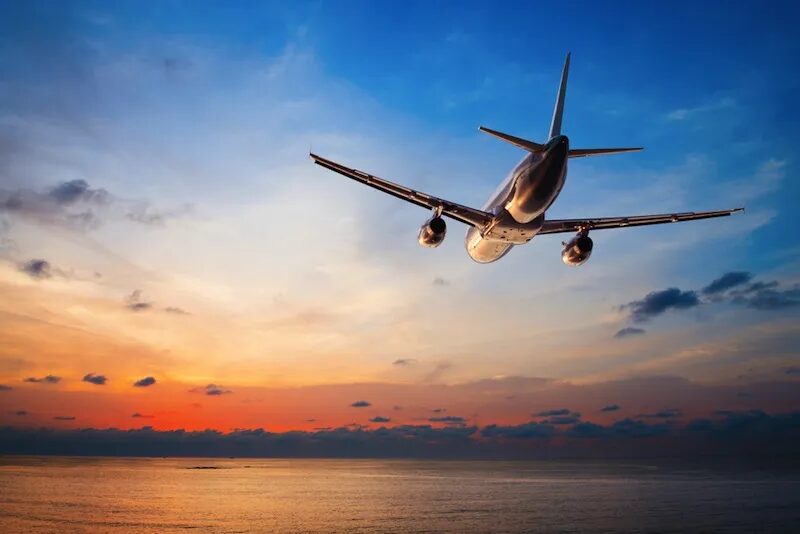September marked a turbulent month for the aviation industry as airlines and airports worldwide struggled with widespread flight disruptions and cancellations caused by cyberattacks and equipment outages. Airline safety remained at the forefront of industry concerns following multiple incidents including in-flight close calls, tarmac collisions, severe turbulence that threw passengers into cabin ceilings, toxic fumes leaking into aircraft at alarming rates, and runway overshoots during landing procedures. Despite these challenges, September also delivered positive developments for air travel with announcements of airport expansions, new airline lounges, improved in-flight Wi-Fi services, and Labor Day passenger numbers setting unprecedented records, demonstrating the industry’s resilience and continued innovation in enhancing passenger experience.
Aviation industry news reflects the complex challenges facing commercial airlines as they navigate operational disruptions while implementing technological improvements and safety enhancements. Airline operations require constant adaptation to emerging threats and passenger expectations.
Flight safety incidents continue drawing regulatory attention from aviation authorities including the National Transportation Safety Board (NTSB) and Federal Aviation Administration. Commercial aviation maintains focus on incident prevention through enhanced safety protocols.
Airport security concerns have intensified following cyberattack incidents that disrupted operations at major international airports. Aviation cybersecurity becomes increasingly critical as digital infrastructure supports essential airline operations.
Cybersecurity Threats and Operational Disruptions
Cyberattacks on airports severely impacted operations at major European airports including London Heathrow, Brandenburg Airport, and Brussels Airport through ransomware attacks targeting check-in and boarding software. Aviation cybersecurity vulnerabilities exposed critical weaknesses in airport digital infrastructure.
Ransomware demands for bitcoin payments disrupted thousands of passengers’ travel plans while airport authorities worked to restore essential systems. EU airports implemented emergency protocols to minimize passenger impact during system recovery periods.
Dallas airport disruptions affected both Dallas Love Field and Dallas-Fort Worth International Airport when telephone equipment outages forced cancellation or delays of more than half of scheduled flights. Infrastructure failures demonstrate single points of failure in airport operations.
Equipment outages reveal the airline industry’s dependence on technological systems and highlight the need for robust backup systems and contingency planning. Operational resilience requires redundant infrastructure investments.
Aviation Safety Incidents and Close Calls
Air Force One close call over New York City airspace involved a Spirit Airlines flight that received repeated warnings to avoid the presidential aircraft’s flight path. Air traffic control protocols prevented potential collision while Spirit pilots received official reprimands for airspace violations.
United Airlines tarmac collision at San Francisco Airport during busy Labor Day weekend involved two aircraft hitting tails after dark, requiring passenger deplaning procedures despite no reported injuries. Ground operations safety concerns highlight airport congestion challenges during peak travel periods.
Virginia runway incident saw a United Express plane skid off the runway during landing at Roanoke-Blacksburg Regional Airport, adding to growing concerns about aircraft landing procedures and runway safety. Regional airport incidents require enhanced safety oversight.
Severe turbulence incidents investigated by NTSB included Delta Airlines flight experiences in July that threw flight attendants and passengers into cabin ceilings during unexpected turbulence encounters. Weather-related incidents emphasize meteorological forecasting importance.
Toxic fumes in aircraft pose increasing health threats to pilots, flight attendants, and passengers according to Wall Street Journal investigations. Cabin air quality concerns require immediate industry attention and regulatory response.
New Routes and Airline Financial Developments
Spirit Airlines financial struggles resulted in second bankruptcy filing, additional schedule reductions, and furloughs affecting 1,000 flight attendants. Low-cost carrier challenges reflect broader airline industry economic pressures and market consolidation trends.
Route expansions include Delta Airlines adding Malta and Sardinia destinations for summer and new Austin-Miami nonstop service. Caribbean Airlines reduced Fort Lauderdale-Jamaica frequency while expanding other Caribbean routes.
Air Canada route expansion covers both domestic Canadian markets and U.S. destinations while winter schedule additions benefit leisure travelers. Seasonal route planning reflects passenger demand patterns and operational efficiency.
Frontier Airlines unveiled 22 new routes for late operations while Southwest Airlines adds California destinations. Low-cost expansion continues despite industry challenges and financial pressures affecting budget airlines.
International route restoration includes Cathay Pacific resuming Seattle-Hong Kong service and United Airlines restarting Tel Aviv flights from Chicago and Washington D.C. International recovery reflects business travel demand returning to pre-pandemic levels.
Airport Lounge and Infrastructure Developments
Alaska Airlines announced plans for a new San Diego International Airport lounge with construction beginning in 2027, featuring one of the airport’s largest lounge spaces. Premium passenger amenities continue expanding as airlines compete for high-value customers.
Plaza Premium lounge expansion includes two luxury lounges planned for JFK Airport’s New Terminal One opening in 2026. Airport lounge companies invest heavily in premium facilities meeting growing demand for enhanced passenger experiences.
Air France lounge redesign at Paris Charles de Gaulle Terminal 2E creates three elegant levels accommodating 638 travelers with sophisticated amenities and contemporary design. International lounge standards continue rising to meet passenger expectations.
Austin-Bergstrom expansion represents the airport’s largest-ever infrastructure project with new concourse construction doubling capacity by the early 2030s. Airport expansion projects address growing passenger demand and airline operations requirements.
Terminal development reflects long-term aviation growth projections while lounge investments demonstrate premium service importance in competitive airline markets.
Technology Upgrades and Passenger Amenities
JetBlue Wi-Fi innovation makes it the first airline to sign agreements with Amazon’s Project Kuiper satellite network, bringing enhanced connectivity to passengers by 2027. In-flight internet becomes increasingly important for passenger satisfaction.
Southwest Airlines Wi-Fi partnership with T-Mobile provides free connectivity for Rapid Rewards members beginning October, demonstrating loyalty program benefits and technology partnerships. Free Wi-Fi becomes competitive advantage for domestic carriers.
American Airlines premium amenities include new Raven + Lily amenity kits for international passengers featuring luxury leather bags and upgraded skincare products. Premium passenger perks help airlines differentiate their service offerings.
Air France Starlink partnership provides free reliable internet across its entire fleet by 2026, representing major connectivity investment for international flights. Satellite internet technology transforms passenger experience expectations.
Air Tahiti Nui premium economy upgrades and Emirates first-class champagne service featuring Dom Perignon Rosé Vintage 2009 demonstrate luxury amenities competition among international carriers. Premium service investments target high-value passengers.
Industry Recovery and Future Outlook
Labor Day passenger records demonstrate continued travel demand despite operational challenges and safety concerns. Air travel recovery exceeds pre-pandemic levels in many markets while airlines adapt to new operating environments.
Technology investments in cybersecurity, infrastructure resilience, and passenger amenities reflect industry priorities for sustainable growth. Innovation adoption accelerates as airlines compete for market share.
Safety improvements require continuous attention from regulators, airlines, and airport operators to address emerging risks and prevent incidents. Aviation safety culture must evolve with industry challenges.
Financial sustainability remains crucial as airlines balance operational costs, infrastructure investments, and competitive pressures while delivering safe reliable service. Industry consolidation may continue as weaker carriers struggle.
The aviation industry demonstrates remarkable resilience while facing unprecedented challenges from cyber threats, safety incidents, and operational complexities. Continued investment in technology, infrastructure, and safety systems will determine the industry’s ability to meet growing passenger demand while maintaining operational excellence.
For comprehensive aviation industry analysis, airline news updates, and travel safety information, visit The Inspiring Insight – your trusted source for understanding the evolving landscape of commercial aviation and air travel developments worldwide.


